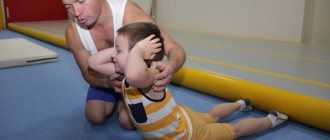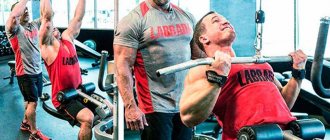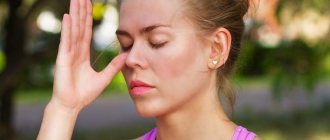Exercises without skis
Training for skiers is divided into those that do not require or require equipment. In the first case, the exercises are performed in any conditions without special training, among them it is worth highlighting the following:
- Warm up. It includes stretching exercises, strength training without sports equipment (squats, push-ups, pull-ups). Do it every day, for example, as a morning exercise.
- Cardio training. These are exercises with a skipping rope, Nordic walking, short and long distance running.
- Special exercises to develop coordination, balance, and the vestibular system.
- A special set of exercises on roller skates. They imitate skiing, classic and skating movements. You can roller skate like ice skating and develop similar muscle groups as skiing. In addition, it is the achievement of balance and coordination of movements.
Home exercises for skiers
Many people are interested in how skiers can train in the summer, as well as in the spring and autumn, that is, in the off-season, if expensive equipment, conditions and ammunition are not available? Of course, a professional athlete needs different exercise equipment, as well as more frequent trips to the track, but amateurs just need to keep themselves in shape, for which home workouts are enough.
Home exercises for skiers fall into two categories: equipment-requiring or equipment-free. The first ones are performed in any conditions; no preparation is required. It is worth highlighting the following exercises for skiers without skis:
- Warm up. This could be general stretching or light bodyweight strength training (such as squats or push-ups). Performed daily, for example, as exercise.
- Cardio load. Interval running, walking, Nordic walking (ski poles are used when walking), skipping rope, and so on are effective.
- Special movements that affect coordination and balance. Any set of home exercises should include similar movements.
- Special exercises on rollers. They create an imitation of skiing movements: various types of moves (skating, classic). Roller skating allows you to skate almost like ice skating, which helps develop the same muscles that are used when skiing, plus additionally develops coordination and balance.
If you have some equipment, you can train more effectively. The skier will include strength movements in the program, which will allow the development of important muscle groups.
Learning to keep balance
Balance is important for a skier, regardless of his specialization. This is taught from the very beginning. So, any child, even a preschooler, begins training with such exercises.
First of all, the athlete must acquire basic coordination skills. To do this, perform squats on one leg, as well as raising legs to the side. When the exercises become easy to perform, you can begin to perform the same movements, but using a hemisphere or platform, which are also used in fitness.
Flexibility and stretching
Any racer using skis should pay special attention to muscle stretching and flexibility. To develop such skills, you will not need to purchase expensive equipment for your home gym; it will be enough to do some basic training.
First of all, it is worth considering basic stretching exercises: bending, swinging, and so on. You should stretch not only the leg muscles, as with the splits, but also pay attention to your back, especially the lower back, and other groups. This will reduce the risk of injury, reduce the risk of sprains and increase joint flexibility.
It is recommended to stretch before each workout or at the end of it. You can perform such gymnastics both in a specially equipped room and at home, since no special conditions are needed.
Strengthening the abs and back
Training the back and abs is important, as these muscle groups keep the body in balance, and a developed muscle corset protects against injury. When performing, you can use various equipment, for example, weights, dumbbells, barbells, horizontal bars, and also perform exercises with your own weight.
It is worth highlighting several basic exercises:
- Hyperextension. A special exercise to develop the lower back. To perform this you need a special simulator.
- Bent-overs with a barbell or dumbbells. Also strengthens the lower back.
- Deadlift. The exercise should be performed carefully, increasing the load gradually, otherwise there is a high risk of spinal injuries, including hernias.
- Exercises on simulators, for example, rows of the lower block, upper block, and so on.
- Standard abdominal exercises, such as crunches, planks, hanging leg raises, and so on.
It is recommended to draw up a training plan and strictly follow it. This is the only way to achieve the highest results. Planning is important both in the winter and in the off-season, when specialized training will not be available.
Balance, flexibility and stretching
Even for a child who comes to the skiing section for the first time, training begins with balance exercises. Initially, the trainee must acquire basic coordination skills. To do this, do squats on one leg, swallows, and leg raises to the sides. In the future, the exercises become more complicated and are done using a special platform or hemisphere.
Any athlete who skis pays special attention to stretching and developing flexibility. To perform such exercises, it is not necessary to purchase expensive equipment; it is enough to include basic elements in the training. Mainly these are bends, swings, splits. At the same time, in addition to stretching the legs, you should also exercise other muscle groups: the back, shoulder girdle, lower back, which makes it possible to reduce the risk of injuries and sprains and increase joint flexibility.
Experts recommend including stretching exercises in your warm-up or cool-down after each workout. You can do this kind of gymnastics in the gym, at home or on the street.
Roller exercise for speed and strength training
Rollers can be of great help in the off-season, when the use of skis is impossible due to weather conditions. Any roller skater has more opportunities to develop ski skills, since they constantly use the same muscles and similar skills.
It is important to use high-quality rollers, as otherwise you can get injured or, at best, rub your feet, most often your little toe. High-quality equipment will not let you down like that.
Skiers can not only roller skate, but also perform various special training. For example, train a certain type of move, work on endurance or speed, move uphill or downhill, and so on.
Skiers can train not only on the piste. There are exercises that allow you to keep yourself in shape and develop certain muscle groups and skills. All this is important to achieve results, as well as to minimize injuries, which often occur in unprepared athletes. You can even train at home, especially at the initial stage or at an amateur level.
Warm-up: exercises
The following exercises are included in the warm-up for a skier:
- Exercise bike - 20 min.
- Performing elements for coordination - 20 minutes.
- Balancing on medicine balls. Starting position: feet shoulder-width apart, torso slightly tilted forward, arms extended in front of you, legs slightly bent in a half-squat.
- Shifting weight from one leg to the other using medicine balls. The same exercise as above, only they begin to slowly transfer the weight from foot to foot.
- Medicine balls are placed in a checkerboard pattern one meter apart. Having assumed the starting position: feet shoulder-width apart with the body tilted forward, begin walking on medicine balls.
- Regular squats, standing on a platform with weights, and squats with alternately extended legs.
- Double twists. Lying on your back, do body crunches while simultaneously pulling your knees to your chest.
Abs and back workout
Exercises to strengthen the back and abs play an important role in training, as these muscle groups keep the body in balance and protect against possible injuries. You can perform the elements using sports equipment or solely with your own weight.
Special attention should be paid to such exercises for skiers in the training complex as:
- Hyperesthesia. An element for the development of the lower back, performed using a special simulator.
- Bend over with weights (barbell, dumbbells) to strengthen the lower back.
- Deadlift. An element for strengthening the back muscles. It must be done carefully with a gradual increase in load, this is the only way to reduce the risk of spinal injury.
- Pulling exercises on machines.
- A standard set of exercises for the abdominal muscles. For example, planks, crunches and leg raises while lying on your back.
It is recommended to create a training plan in advance and stick to it. Thus, the effectiveness of classes will be higher.
Need for special training
It is important for a skier to have good endurance. This quality is developed through training. Such work requires perseverance and endurance, because classes last one and a half or even two hours. At the same time, the athlete should not overexert himself and act at the limit of his strength. Long runs or riding an exercise bike at a leisurely pace build and strengthen muscles. This also applies to the heart muscle. Such sets of exercises allow the racer’s body to adapt to prolonged physical activity.
Performing this kind of strength exercises is an important stage in preparation for the winter season. Training leads to an increase in heart size and a decrease in heart rate, which is important for any athlete.
You can train in the gym under the supervision of a specialist or at home. This changes the core muscles. They gain endurance and become stronger. Thanks to this, athletes can work for several hours without getting tired. New vessels and capillary branches formed inside the muscles saturate the body's systems with oxygen. Increased work of the lungs also leads to their enlargement. This allows the rider to breathe deeper and move faster. The main thing is to be able to balance the load on the body.
When determining the duration of classes, choosing exercises and tactics, it is necessary to take into account the age and health of the athlete.
Leg workout
The bulk of the skier's load falls on the legs. That is why it is very important to develop their muscle strength. Depending on the length of the distance, riding style and other nuances, a set of sports exercises is selected. But there are also basic exercises for skiers; due to their narrow specialization, they are almost never used in training other sports.
Twist. This element, designed specifically for skiers, promotes leg development. Do it as follows:
- Starting position: legs are brought together, arms are along the body and slightly bent at the elbows.
- The athlete makes a deep squat, while alternately pointing his knees in one direction and then in the other direction. At this moment, the hands are directed in the direction opposite to the legs.
- Then the athlete takes the starting position, without lifting his feet off the floor.
Direction of the knees is done carefully, without using weights. This element partly simulates the load that an athlete faces while descending a mountain.
Pistol. The technique for performing this exercise is similar to a one-leg squat. Provides an opportunity to primarily develop leg strength and coordination. Do the element in the same way as standard squats, only with the leg extended forward. At first, the element is performed while holding onto the wall.
Knee lift. This exercise not only develops leg strength, but also increases endurance. This is walking with the knees raised high and the torso touching. Initially, the element is performed without weights, over time the task becomes more complicated, and weights are used.
Arm training
While skiing, the skier uses not only his legs, but also his arms and the muscles of the chest and shoulder girdle. Training in the gym will be enough if you include push-ups, dumbbell or barbell presses in a set of exercises for a skier at home.
An important condition for home training is regularity and the presence of a given program. Only then will the process be effective with minimal risk of developing negative consequences.
The complex with the connection of equipment includes exercises with an expander (elastic band). Will be described in more detail below.
Set of exercises
A set of exercises with a ski expander at home, on the sports field or in the gym.
Lateral spread
Exercise for pumping the middle and anterior deltas.
Technique:
- Stand up straight, step on the middle of the tourniquet with your feet to fix it, your back is straight, your arms are lowered along your body.
- Raise your arms to the sides until your biceps are parallel to the floor.
- Pause for 1 second, then slowly lower your arms to the starting position.
Swing in front of you
Emphasizes the front delts.
Technique:
- Step on the middle of the tourniquet with your feet and stand straight. Hold the machine with your free hands.
- Slowly raise both arms in front of you until they are parallel to the floor.
- Take a short break and return to the starting position.
Horizontal thrust
The main movement for developing the back.
Technique:
- Place the harness behind any support and step back to tension the cables. Hold the handles at stomach level.
- Slowly move your shoulders back and squeeze your shoulder blades together, pull your arms towards your stomach.
- Take a short break and slowly return to the starting position.
Front press
The main movement for practicing and training strikes in martial arts.
Technique:
- Secure the harnesses to any support behind your back. Place your arms forward so that the bands rest on top of your shoulders. The back is straight, legs are at shoulder level (or take a stance, depending on the type of martial arts).
- Alternately throw your arms forward, simulating blows.
Exercise "prayer"
Powerful Ab Move
Technique:
- Secure the handles to a support at or above head level. Get on your knees, bring your hands together and press them to your chest. The handles should be just below the chin.
- Perform a twist, trying to tuck your body as much as possible and bring your chest toward your hips.
Biceps Curl
A classic exercise where instead of dumbbells you need to use a ski expander.
Technique:
- Pinch the middle of the tourniquet with your feet to secure it, stand straight.
- Alternately raise your left and right arms (possibly together), bending your elbow.
- At the top point, take a short break, lower your arms down at a slower pace than when you were lifting.
Extension of arms in front of you
The exercise targets the triceps and is a version of the French press.
Technique:
- Secure the expander behind you to any support.
- Stretch your arms forward to feel the tension.
- Extend your elbows at an angle of 90 degrees.
- Take a short pause, then return to the starting position with a powerful movement.
Strength training: exercises
Strength and endurance training is of utmost importance for skiers. In order to be able to correctly distribute the load over a distance and complete it, skiers spend a lot of time in the off-season and warm seasons developing their physical capabilities.
The strength exercise program for skiers should include: running and jumping, elements with resistance. To develop all muscle groups, perform weight-bearing exercises. The number of required repetitions and approaches depends on the weight of the equipment and its type. It is recommended to combine strength training with cardio exercises.
An approximate set of exercises at home is as follows:
- push-ups 3 sets of 20 times;
- reverse push-ups using a chair or bench, 3 sets of 15 times;
- weighted squats, 3 sets of 15 reps;
- straight and side plank;
- Dumbbell chest press, 3 sets of 15 reps;
- abdominal crunches 3 sets of 20 times;
- leg raises lying on your back 3 sets of 20 times.
Ski training equipment
Skis and roller skis
Used during endurance training, intervals of varying intensity, speed work, recovery and, of course, competitions. For special strength work, skating without poles, without the use of legs (simultaneous stepless walking or doublepoling), or skating with one pole is practiced.
Running and cycling
Used for developing endurance, intense and speed training, recovery and competition.
Imitation
Stepping imitation is used to develop endurance, strength, and intense training.
Jumping simulation - for intensive training, strength, speed.
The simulation can be performed with or without ski poles. The movements repeat those of the classic alternating stroke. Simulation poles should be about 5cm shorter than your regular classic ski poles.
Imitation walking can be incorporated into running workouts by using it as intervals on steep and/or long inclines.
When performing a jumping imitation, in order to improve strength and explosiveness, take short intervals, push off powerfully, trying to make each step as long as possible. During interval work, try to maintain the intensity, rhythm and push-off force of a cross-country ski race.
Plyometric (jumping) exercises
Used to develop explosive strength.
Perform jumps in series of 10-15 jumps, trying to make each jump as long as possible. Rest between sets for 2-3 minutes. To skate, jump from side to side (from one foot to the other) either in place or up a steep incline. For the classic move, jumping with one foot pushing up the slope of a steep climb is performed, or jumping with both legs at the same time also uphill. You can come up with different variations of jumps, the main thing is to warm up properly before such exercises.
Gym
Lifting weights in the gym is used to train maximum strength, as well as balanced development of all muscle groups. Do exercises on different machines to maximize the use of a variety of muscles.
Circuit training
Used to train strength endurance and balanced muscle development.
Choose a set of several exercises for the abdominal muscles, back, legs and arms. Perform each exercise for 30-90 seconds and then immediately move on to the next exercise - without rest.
Sequence of exercises in the gym
An approximate set of strength exercises for skiers in the gym is as follows:
- lying on a flat bench, lifting the barbell - 10 times;
- push-ups with cotton - 20 times;
- lifting the upper block - 10 times;
- squats with a barbell - 10 times;
- running with high knees for 1 minute;
- push-ups on parallel bars - 10 times;
- Bench press lying on an incline bench - 10 times.
Training in the gym is carried out using the circular method. That is, after each exercise there is a rest pause of 30-40 seconds, after completing the circle the athlete rests for 2-3 minutes and proceeds to the next circle. Number of repetitions 2-5 times.
Exercises with a skier's expander
During training, an expander can replace many types of exercise equipment and sports equipment, providing similar muscle and physical activity.
Exercises with an expander (training band) include:
- Bringing your hands together. The exercise helps to work out the muscles of the arms, chest, shoulders, and back. The expander is pulled over a stationary object (post, tree trunk). They stand with their backs and, taking each end in their hand, move away, creating tension. Then, as you inhale, bring your arms together, and as you exhale, spread them apart.
- Rotations. Having stood in the position described in the previous exercise, perform circular movements with your arms in one direction and then in the other direction. This element effectively strengthens the joints and muscles of the shoulder girdle.
- Boxing movements. Having risen to the starting position, as you exhale with resistance, make movements that imitate blows in boxing.
- Shoulder pull. They turn their face to the support through which the expander is pulled, and while inhaling they begin to perform pulling movements towards the shoulders, slightly bending their knees.
- Swings. Remaining in the same position, as you inhale, raise the elastic band up to the height of your arms straightened above your head, and as you exhale, lower your arms. During the exercise, the deltoids are actively involved.
Exercises with an expander help develop strength, running speed, and performance. The tourniquet is a universal tool for effective training that can be used at any time.











